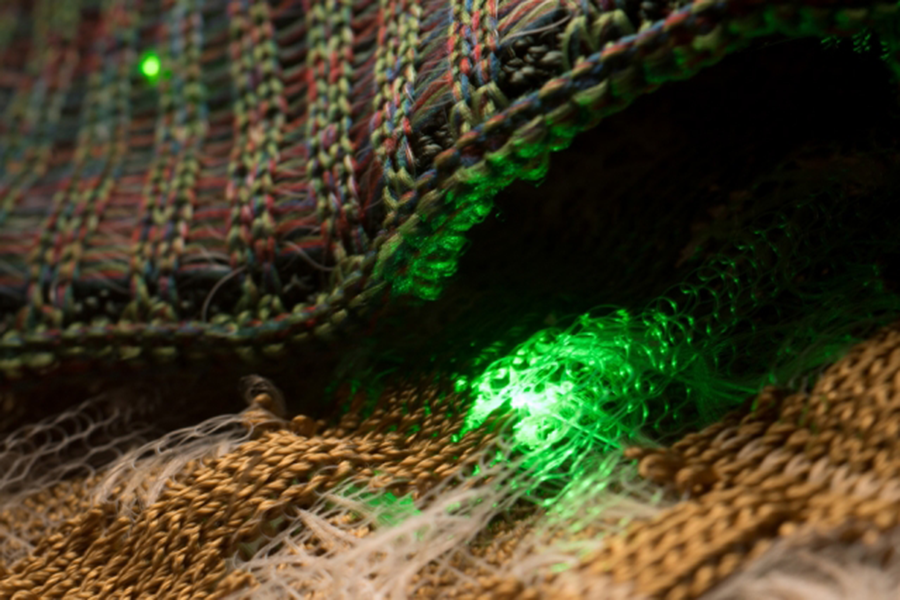With the growing popularity of smart clothes, many researchers are now trying to enhance the fiber functionality in order to develop more enhanced smart clothes.
Optical fibers are usually made by creating a cylindrical objects known as “preform,” then heating it, but this method is limited to materials that are inferior in performance.
Now researchers at MIT and Advanced Functional Fabrics of America (AFFOA) have embedded high speed optoelectronic semiconductor devices, including LEDs and diode photodetectors within fibers which are so soft and flexible they can be made into wearable clothing.
The researchers say this discovery could lead to a new “Moore’s Law” for fibers, to put it simply, a rapid advancement in the capabilities of fibers over time, just like the advancements in microchips have grown over decades.
Read more Medical Smart Fabric Market Shows Noteworthy Growth by Strong CAGR Up To 2027
One of the advantages of incorporating function into the fiber material itself is that the new fiber becomes waterproof.
To demonstrate this, the researchers placed some of the photo-detecting fibers inside a fish tank. A lamp outside the aquarium emitted rapid optical signals to transmit music through the water to the fibers. The fibers in the tank converted the light pulses very rapidly to electrical signals, which were then converted into music. The fibers were able to survive in the water for weeks.
Although the process may sound simple, for the researchers it has been a long difficult process to make it work consistently, and making sure that the fibers could be manufactured reliably and in quantity.

Staff at the Advanced Functional Fabric of America Institute, led by Jason Cox and Chia-Chun Chung, developed ways to make these fibers ready for transitioning to industry. Marty Ellis from Inman Mills used a conventional industrial manufacturing-scale loom to develop techniques for weaving these fibers into fabrics.
“This paper describes a scalable path for incorporating semiconductor devices into fibers. We are anticipating the emergence of a ‘Moore’s law’ analog in fibers in the years ahead,” says Yoel Fink, research advisor and MIT professor of materials science and electrical engineering and CEO of Advanced Functional Fabrics of America (AFFOA). “It is already allowing us to expand the fundamental capabilities of fabrics to encompass communications, lighting, physiological monitoring, and more. In the years ahead fabrics will deliver value-added services and will no longer just be selected for aesthetics and comfort.”
Read more MIT Engineers Create Pressure-Responsive Smart Fibers That Change Color to Show Bandage Pressure
The researchers say that in addition to communications, the fibers could potentially be used in the biomedical field. For instance, such fibers could be used to make a wristband that measures pulse or blood oxygen levels, or be used in a smart bandage that continuously monitors the healing process.
The findings were published in the journal Nature.












